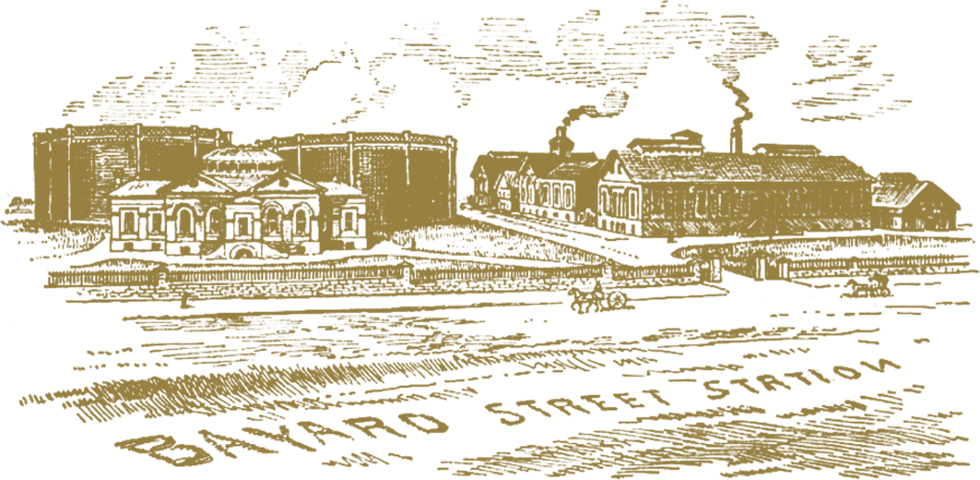
The History of Housewerk's Bayard Station
BAYARD STATION—known at its opening in 1885 as The Chesapeake Gas Works—served as the headquarters of The Chesapeake Gas Company of Baltimore City. This forward thinking company pioneered new techniques for the manufacture of coke gas, a man made fuel that predates the city's use of natural gas. These innovations allowed the company, under the stewardship of E. J. Jerzmanowski, the "Polish Baron," to sharply undercut its competitors, triggering price wars that destabilized the competition and ultimately resulted in a series of mergers. By 1888 all of Baltimore's gas producers were under the ownership of one company -- Consolidated Gas, known today as BGE.
During the station's heyday, the gas works spread over 14 acres bordered by Bayard Street to the south, Wicomico Street to the east, Nanticoke to the west and Ostend to the north. The complex included the Valve House (Housewerks), four large telescoping holding tanks called "gasometers" situated directly behind the valve house (no longer extant), and a series of processing buildings across Hamburg Street, of which one remains today. The gas was manufactured, stored in the gasometers, and then piped into the valve house where it was compressed before being directed into the main lines of the city. (The pipe for the Hamburg Street Line is still visible in the cellar!)
After the 1888 gas company merger, Bayard Station continued to produce gas for a few more years before all processing moved to the Spring Garden site, where it continues to this day. By 1904, the Baltimore Gas Appliance Manufacturing Company had leased the former plant buildings to assemble the famed Oriole Stove; a fixture in many of Baltimore's kitchens. Over the years Consolidated maintained the Valve House for various purposes ranging from offices and record keeping facilities to classroom space. Period photographs show how the building changed over time: a vault was added after 1890, an addition enlarged the west wing, and its floor was lowered to accommodate a street-level entrance in the 1910s. In the 1920's a large motorized blower assembly was featured on the main floor before being modified again to teach apprentice gas fitters in the 1950's.
Most of the Bayard Street Station was torn down by the mid-1960s, leaving only the Valve House and Retort House. Consolidated, now BGE, continued to hold the property surrounding the Valve House until the mid-1980s when it was sold into private hands and used as a photography studio over the next decade.
In February of 2005, Ben Riddleberger, purchased Bayard Station and started his architectural salvage business, Housewerks. Over the past 10 years, the Housewerks team has stabilized the long vacant building and has highlighted its many fine details, including, ornamental plaster and woodwork, fireplaces, and Palladian windows.
In 2006, Housewerks worked with the Pigtown neighborhood to have the building included on the National Register of Historic Places.
In 2010, Housewerks won the Baltimore Heritage Preservation Award for Baltimore’s best preservation project.
We at Housewerks are delighted to be a part of this storied building's history, and are proud to say that Bayard Station is Housewerks' home.





